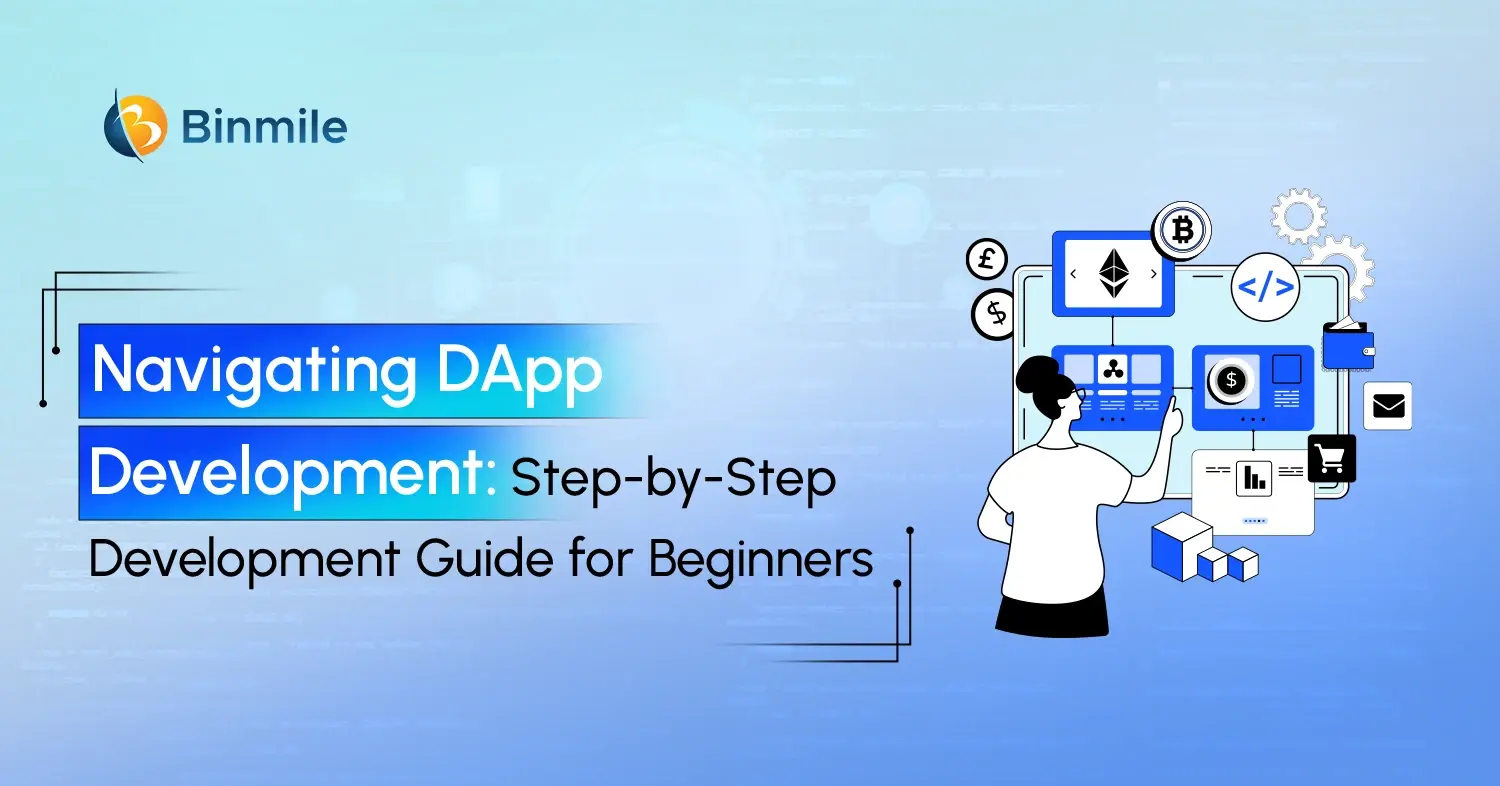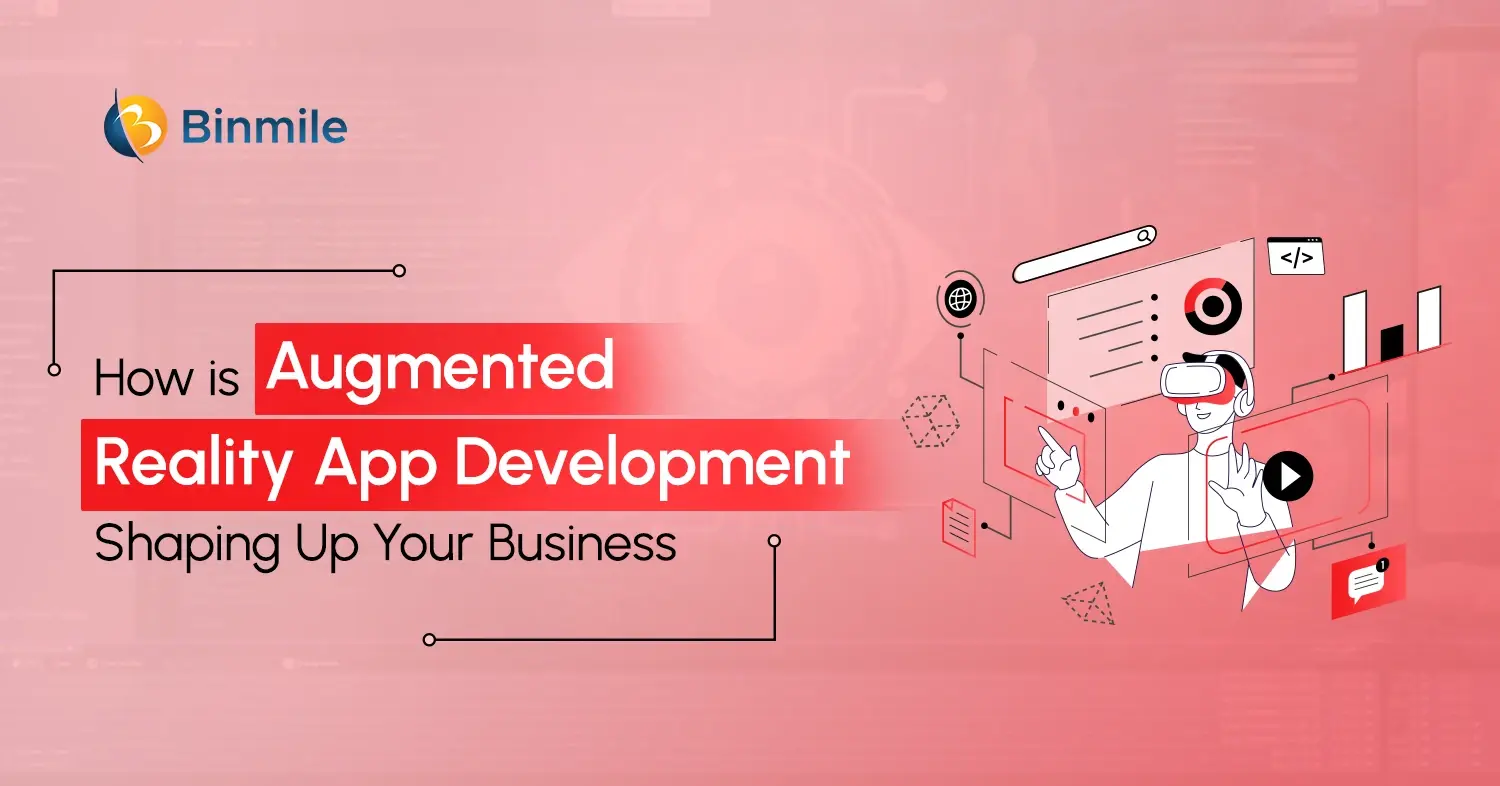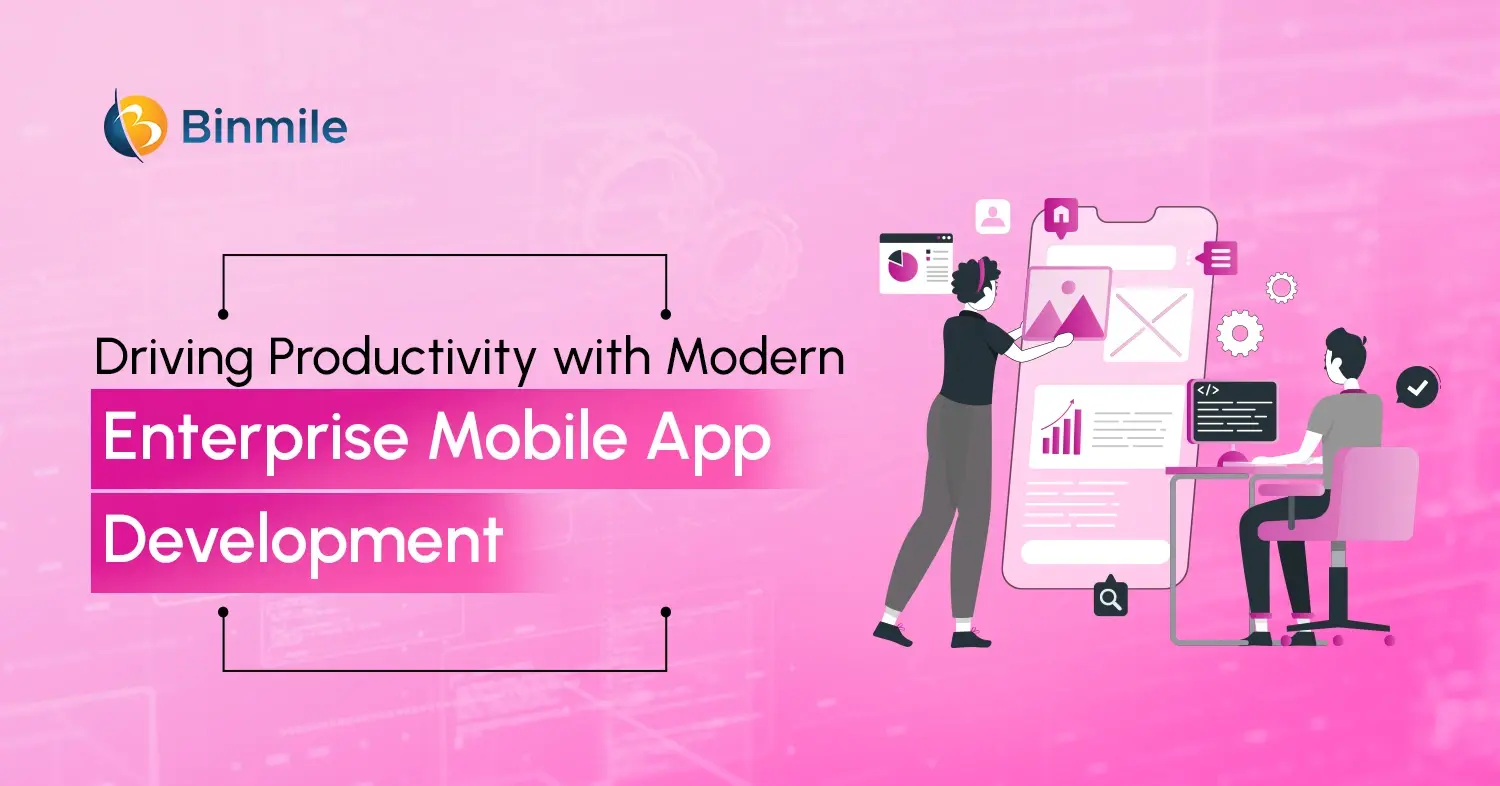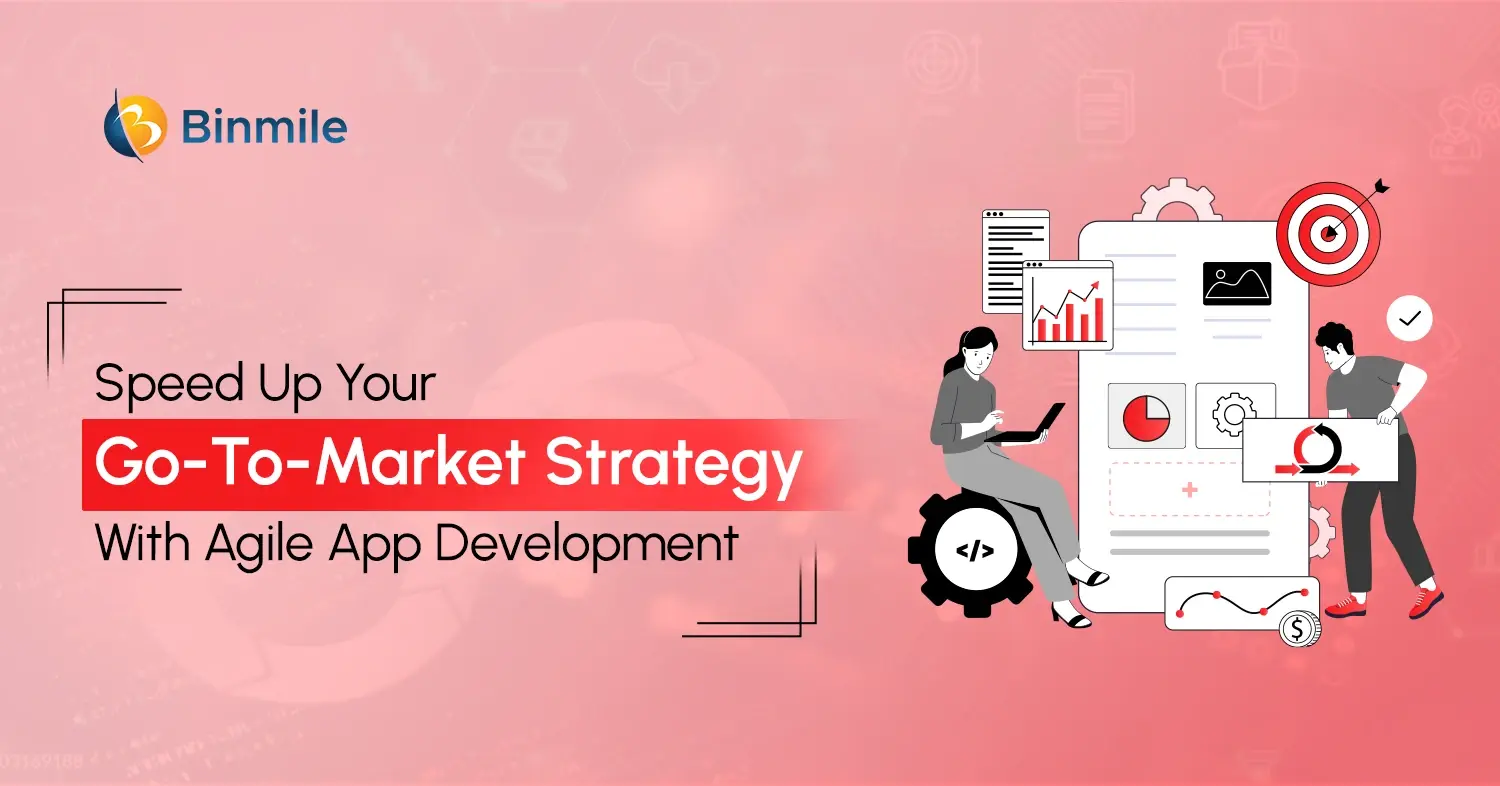The global blockchain market is expected to reach $69.04 billion by 2027 and we can notice an upward trend for blockchain technology, also known as distributed ledger technology. What is blockchain technology? It’s a digital ledger that records transactions and tracks assets in a decentralized network. Its advanced security and transparency have built trust among people. It has been receiving mass adoption across multiple industries such as insurance, healthcare, and finance sectors, but this is likely just the beginning and in this DApp development guide, we’ll cover everything.
DApp Market Trends & Growth Potential
- DApp Usage is Growing: As of 2024, over 5,000 active DApps exist, with Ethereum leading the space.
- DeFi Boom: The DeFi (Decentralized Finance) industry has surpassed $100 billion in total value locked (TVL).
- Web3 & Metaverse: DApps are playing a crucial role in Web3 gaming, NFTs, and decentralized social media.
What is a DApp? Understanding the Difference of DApps vs Apps
Let’s start with the basic question, what is DApp? Did you know the difference between DApps and traditional apps? Decentralized applications (DApps) are open-source applications running on blockchain networks rather than centralized servers. DApps are managed by a decentralized community, contrary to traditional applications that are managed by a single developer, business, or entity. They form the backbone of Web3, revolutionizing digital interactions.
DApps are one step ahead of super app development too. While the Super app unifies several services and features into one cohesive whole, DApps work as normal apps except they run without central servers. Also, you might have come across terms like NFTs in luxury fashion, Bitcoin, and crypto-wallets. However, DApp development or decentralized applications are likely something you hear of less often. But these are the forces to reckon with.
| Feature | Traditional Apps | DApps |
|---|---|---|
| Control | Centralized (Company Owned) | Decentralized (Blockchain-based) |
| Security | Vulnerable to hacks | Highly secure & encrypted |
| Downtime | Prone to failures | No single point of failure |
| Transparency | Controlled by a single entity | Fully transparent transactions |
| Monetization | Ad-based, subscriptions | Tokens, DeFi, smart contracts |
So, if you’re also wondering how to build DApps and leverage the transformative power of decentralized applications, does your business even need the app? Then this blog is for you. We’ll offer a step-by-step guide to DApps development. In addition, we’ll also explain how businesses can reap the benefits decentralized applications have to offer.
Exploring Decentralized Technologies: The Future of DApp Development
Well, it’s hard to define DApps in exact terms, except to say that they’re a type of distributed, open-source software application that runs on a peer-to-peer (P2P) blockchain network rather than on a single computer. As the apps are not controlled by a single authority, this means a DApp can process data via distributed networks and execute transactions without centralized servers or backend technologies and with easy accessibility and no single point of failure.
In simpler terms, DApps are just like any other software applications that are web or mobile-device compatible, but they’re P2P supported. They are considered part of Web3, the present evolution of the World Wide Web. Therefore, once a developer has released a DApp’s codebase, others can build on top of it. These apps run on a distributed computing system such as a blockchain or peer-to-peer network and are open-sourced, and highly encrypted. Thus, making these applications incredibly difficult to hack and alter data, offering businesses a solid resilience against cyberattacks or data breaches.
DApp Development Cost: An Overview
How much does it cost to develop DApps? Before we discuss the best practices, let’s first understand what is the development cost of DApps. To give you an estimated price, a decentralized application may cost between $60,000 and $80,000. DApps with advanced features like staking and minting, among others, would cost nearly $150,000 or more for an MVP.
Some notable categories of decentralized software include:
- DeFi (Decentralized Finance) Apps
- Marketplaces (took off with the NFT craze)
- Online Games (Gambling)
- Identity Management
- Wallets
7 Steps to Streamline Your DApp Development Process & Cost
By now you’ve understood how DApps solutions are different from traditional application development services. Now, let’s explore the DApp development process to ensure success.
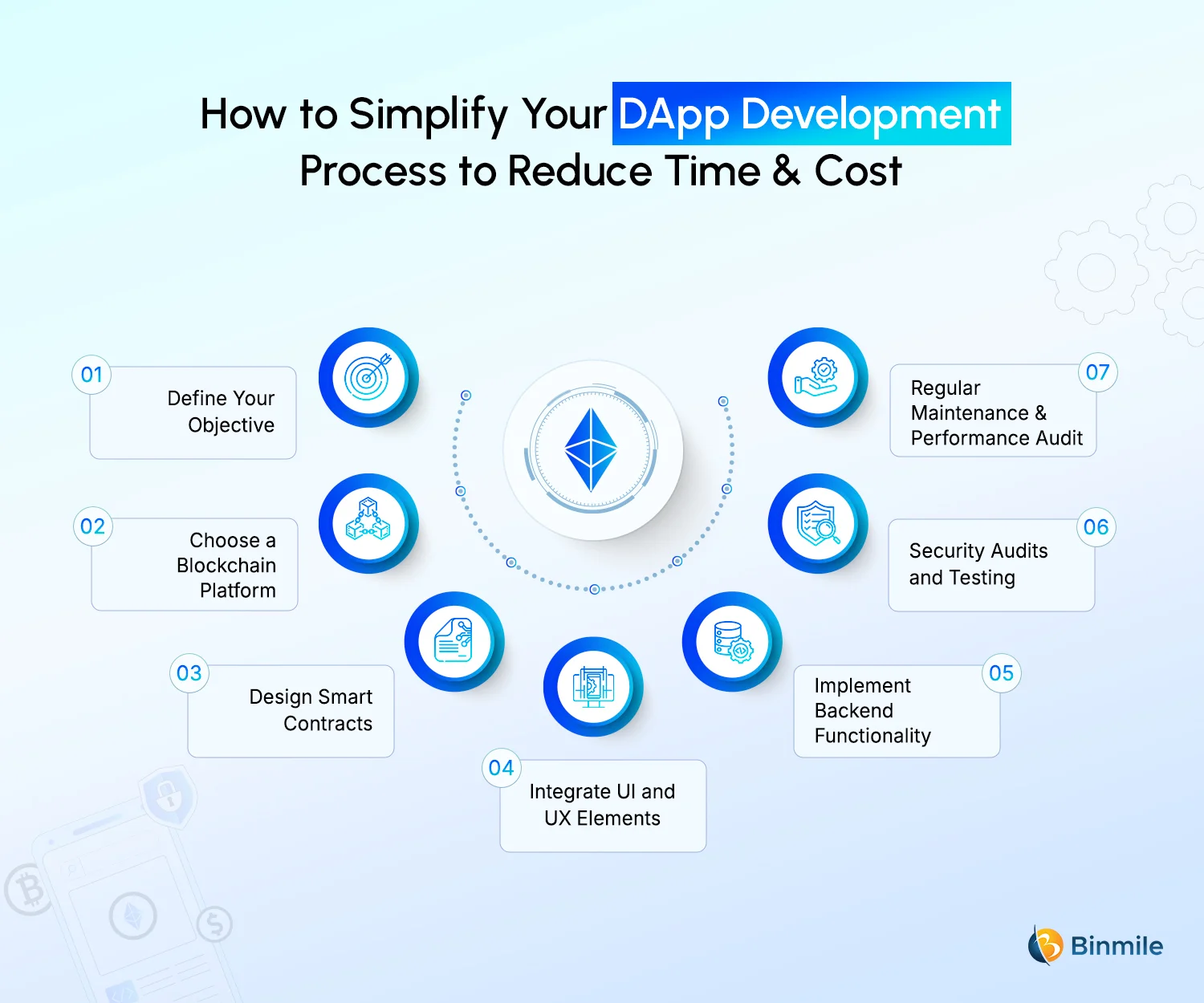
1. Define Your Objective
Clearly state the goal of your DApp project. You can research the market to determine a specific problem or area of need in blockchain DApp development, specifically within an industry, and outline the goals that your DApp aims to accomplish. This ensures that everyone is aware of what it will be used for and that your project stays on budget and development track.
The complexity or features of DApps impact your DApp development cost. Basic DApps may start at around $5,000, while complex ones can reach $50,000+.
2. Choose a Blockchain Platform
Compare different blockchain platforms carefully before choosing the one that best reflects your project’s goals. Look for scalability, transaction speed, and community-driven support. Since Ethereum, Binance Smart Chain, Solana, and other platforms have their unique characteristics you should select such a platform based on your DApp needs. We recommend going with Ethereum as it hosts half of all active decentralized applications (DApps) on the market, currently with 600,000 active users.
Different Blockchain platforms come with different price ranges. For instance, Ethereum-based DApps usually have lower development expenses, ranging from $5,000 to $30,000+, while platforms like EOS or Hyperledger may increase costs.
3. Design Smart Contracts
Design solid and safe smart contracts that dictate the inner logic of your DApp. Use established languages such as Solidity for Ethereum or Rust to Concentrate on security best practices. A robust and solid smart contract automates a workflow, triggering the next action when conditions are met and vulnerabilities in smart contracts may have dramatic effects.
DApp development cost may vary with what kind of smart contracts you go for. Take, for example, complex smart contracts that cost between $5,000 and $20,000+.
4. Integrate UI and UX Elements
Focus on creating a user-friendly, easy-to-navigate, and engaging interface. Go for front-end development frameworks such as React, or Angular to offer a more engaging and informative user experience with designs that communicate information more effectively and promote adoption and retention.
DApp design and features affect app development costs since a well-designed and user-friendly interface enhances costs. Advanced UI/UX features may cost around $5,000 to $15,000+.
5. Implement Backend Functionality
Establish a strong supporting backend infrastructure for the functionality of your DApp. Connect the front end to smart contracts safely to ensure optimal data storage and add any necessary APIs for transactions with the outside world. This back-end development is essential to the smooth running of your app and for high-functional apps.
It depends on what type of server infrastructure you choose or database management you go for. For instance, database management, backend frameworks, and user authentication contribute $5,000 to $15,000 each, with scalability requirements adding $10,000 to $20,000+.
6. Security Audits and Testing
Conduct comprehensive security audits to determine and eliminate any weaknesses present in your app’s code. Perform both automated and manual testing methodologies like unit tests, integration testing, and user acceptance analyses. Periodically update your security procedures to avoid new threats.
Robust security features lead to higher DApp development costs ranging from $5,000 to $20,000+.
7. Regular Maintenance & Performance Audit
It’s essential to evaluate the performance of your app, so monitor its performance closely and be prepared to address any issues promptly. Stay informed about updates and changes in blockchain protocols, and periodically release updates to enhance features, security, and overall user experience modernization. In addition, regular maintenance is key to ensuring the ongoing success and relevance of your DApp.
Basic maintenance falls within $2,000 to $5,000, while advanced or additional maintenance may cost somewhere $5,000 to $15,000+.
Harness the power of blockchain with our expert dApp development services. Let us build a secure, scalable solution tailored to your industry needs—be it DeFi, NFTs, or gaming.
Key Benefits of DApp Development
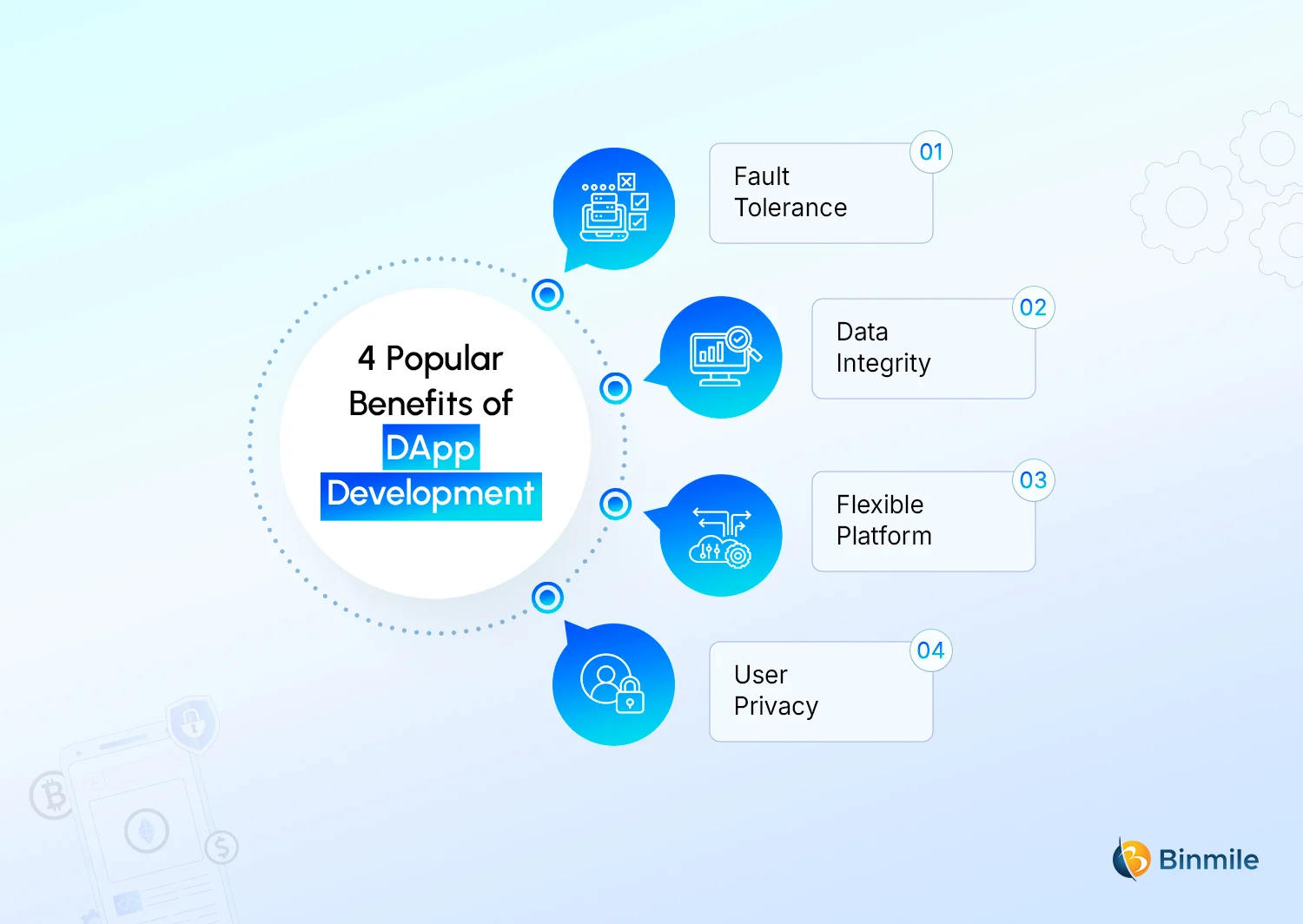
It’s interesting how DApps sound like a new concept but they have been around since the early 2000s. You must remember the BitTorrent website and download a couple of movies on the service. It’s a DApp. However, what makes these modern blockchain protocols stand out is the new shared trust mechanisms that are cryptographically secured.
As discussed earlier, DApps are highly secured thanks to the immune nature of distributed ledger technology (DLT.) There are other advantages of the DApp as well, so let’s know them.
- Fault Tolerance: DApps can function though little slowly even with a single network. Thus, in the absence of a centralized network, it’s nearly impossible for hackers to attack any nodes to take down a DApp.
- Data Integrity: Blockchain’s consensus algorithms ensure data stored in the blockchain is resistant to change and keeps it immutable and secure.
- Flexible Platform: Ethereum offers highly flexible platforms that respond to the quick development of DApps for different industries easily and without a hassle.
- User Privacy: Users need not submit personal information to DApps to use app-specific functionality.
Popular Examples of DApps and Their Estimated Development Costs
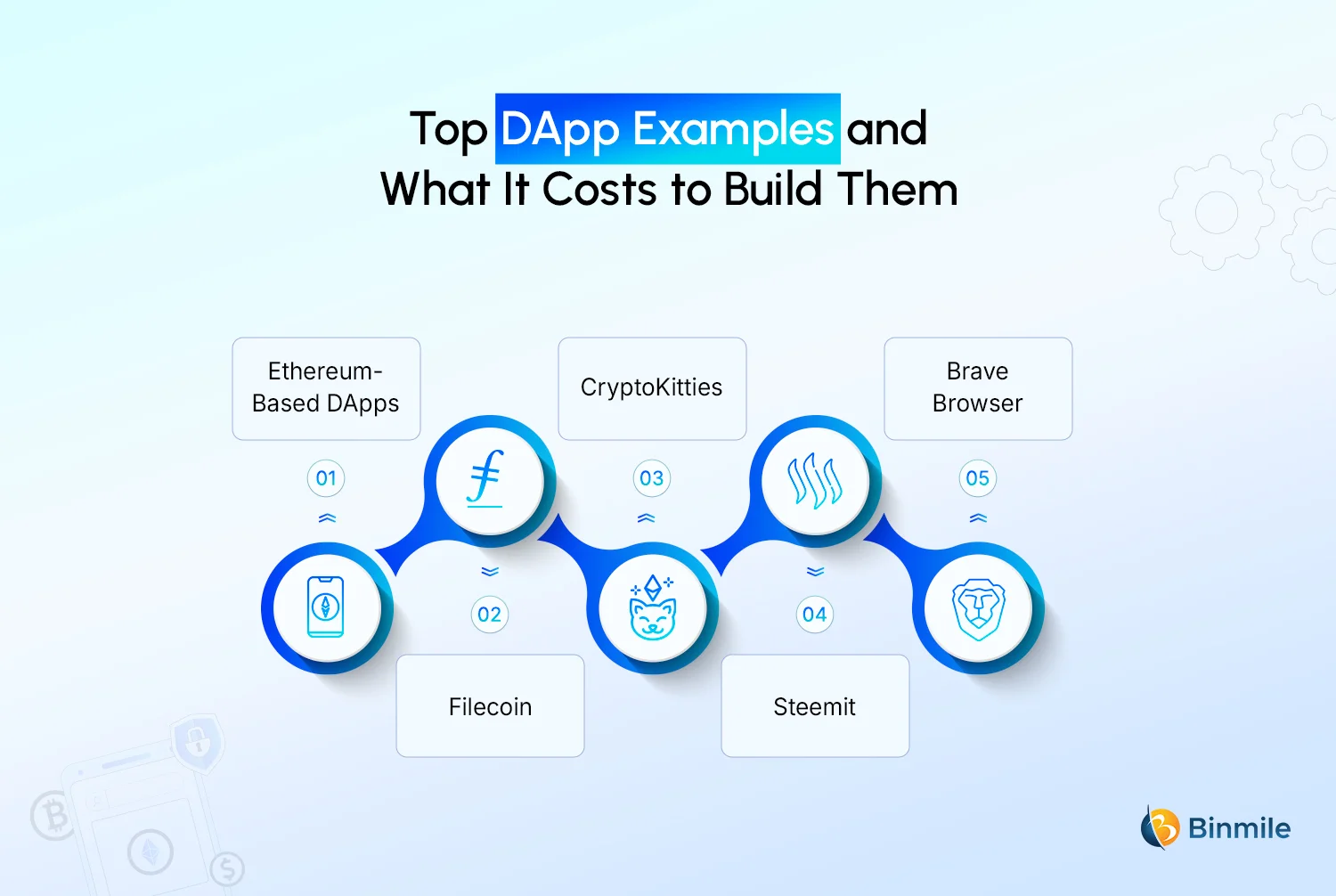
Decentralized applications (DApps) leverage blockchain technology to offer secure, transparent, and user-controlled solutions across various sectors. Let’s explore some popular DApp examples along with their estimated development costs:
1: Ethereum-Based DApps:
Ethereum remains the most popular platform for DApp development, hosting applications across various sectors. Developing a decentralized application on Ethereum can cost anywhere between $50,000 to $300,000, depending on the complexity of the app, smart contracts, and integration requirements.
Examples:
- Uniswap: A decentralized exchange enabling peer-to-peer trading of cryptocurrencies.
- MakerDAO: A decentralized system for managing stablecoins.
2: Filecoin
Filecoin is a decentralized storage network enabling secure data storage and retrieval. It offers a scalable, cost-effective alternative to traditional storage. Developing a similar decentralized storage solution typically costs between $100,000 and $500,000, depending on infrastructure scale, storage capacity, and security protocols.
3: CryptoKitties
CryptoKitties, one of the first blockchain-based games to gain public attention, lets users collect, breed, and trade virtual cats on the Ethereum blockchain. Developing a similar DApp typically costs between $100,000 and $300,000, depending on UI complexity, smart contract integration, and the chosen blockchain network.
4: Steemit
Steemit, a blockchain-based social media platform, rewards users for creating and curating content. It enables decentralized blogging and content sharing. Developing a similar DApp typically costs between $150,000 and $600,000, depending on features, scalability, and community management tools.
5: Brave Browser
Brave is a privacy-focused web browser that rewards users with cryptocurrency for viewing ads. It features a built-in ad blocker and prioritizes user privacy. Developing a browser-based DApp like Brave costs an estimated $200,000 to $500,000, depending on browser development, Basic Attention Token (BAT) integration, and security standards.
Ready to build your first DApp? Connect with our blockchain development experts and start your Web3 journey today!
Wrapping Up
We now understand how DApps development is driving the web 3.0 revolution and may replace centralized architecture with the decentralized, blockchain-based approach. It’s going to put the focus back on the users, by removing intermediaries and establishing trust through automated distributed cryptography. The world of decentralized applications, or DApps, represents a paradigm shift in how software operates. Navigating the landscape of DApp development is both exciting and challenging.
Businesses need to understand and follow the best practices of the DApp development guide and being aware of the current software development trends will empower you as an authority in the ever-evolving world of decentralized applications. In this blog, we explored the world of DApps, and its benefits and discussed how to build DApps like a pro. In addition, seeking a professional software development team that will follow your project’s requirements and optimize them for better efficiency, get in touch to kickstart your DApp journey today!
Frequently Asked Questions
Costs vary depending on multiple factors such as security features, and UX/UI elements, among others. But on average, a decentralized application may cost between $60,000 and $80,000. DApps with advanced features like staking and minting, among others, would cost nearly $150,000 or more for an MVP.
Decentralization, enhanced security, transparency, and community engagement are among the primary benefits.
We’ve provided a detailed comprehensive DApp development guide, but to give you an overview. Here are the 7 steps to build a DApp:
- Define Your Objective
- Choose a Blockchain Platform
- Design Smart Contracts
- Integrate UI and UX Elements
- Implement Backend Functionality
- Security Audits and Testing
- Regular Maintenance & Performance Audit
DApps are built on a decentralized network supported by a blockchain-distributed ledger. Utilizing blockchain means a DApp can process data through distributed networks and execute transactions. DApps are often built using the Ethereum platform.
